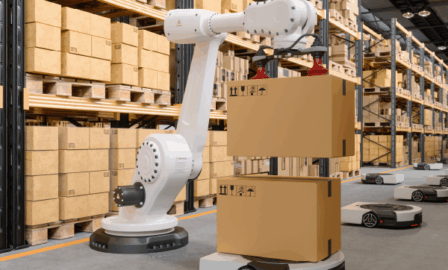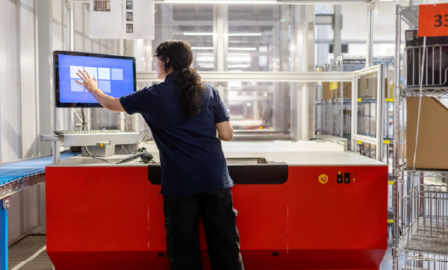Applying Analytics to Navigate Uncertainty in the ‘New Normal’
As the coronavirus pandemic has upended traditional supply chains, leaders have been challenged to make sense of the uncertainty. At the onset, some supply chains saw worried consumers flooding stores creating huge spikes in demand; subsequent shutdowns kept consumers at home and demand plummeted. Impacts of seemingly unrelated events can disrupt supply chains in unpredictable ways. For example, a drop in demand for ethanol production is causing a carbon dioxide shortage, threatening food and beverage production and even municipal water treatment capacity. One key element that undeniably deserves focus is getting a handle on demand now and forward into the new normal as the states re-open. Traditional forecasting uses historical sales to predict future demand – but what do you do when the past is chaotic and the future is uncertain? Supply chain leaders who are applying analytics to these issues will reap the most success.
Applying Analytics: Test and Sense for Short Term Demand Forecasting
In a time of change or disruption, relying on historical patterns to predict future demand is unreliable – patterns of the past no longer apply. But perhaps there are some traditional tools that can be applied in a different way and combined with analytics tools to focus on more recent history and shorter forecasting horizons.
Clarkston Analytics Lead & Director Tim Plummer suggests that organizations could look at recent historical demand data in subsets: for example, compiling data by zip code for areas that are “open” vs. “closed” can show how consumer demand behaves under different pandemic response conditions. Applying machine learning and pattern recognition to these data sets can find commonalities in demand profiles across disparate product categories, creating new forecasting groups. Take a “test and sense” approach – use smaller data sets, look for patterns, leverage those patterns to combine data in a new way, apply traditional statistical forecasting techniques to the new combinations, and then measure the accuracy of these forecasts. If the new forecast groups you have created prove inaccurate, repeat the process and try new combinations. When you find combinations that work, you can use these to create demand forecasts for other areas/zip codes that are opening or closing as the pandemic and responses evolve.
“The shift from gut decisions to data decisions is more important than ever,” – Tim Plummer, Clarkston Consulting.
Seek Out New Data Sources
Unique data sources can provide intelligence to supplement traditional supply chain planning tools. For example, using Natural Language Processing (NLP) of social media, you can find what consumers are saying online about your products (or competitors’ products). AI mining and analysis of this data can provide intelligence that can be used to modify near-term forecasts. One of Clarkston’s clients was able to use consumer sentiment data to focus production on key products when shortages were occurring whereas competitors were unable to meet spikes in demand.
Beyond forecasting, there are opportunities to enable inventory agility in times of volatility. Stay-at-home orders have forced consumer behavior to change, driving huge increases in online ordering. Web scraping tools can help you identify what online competitors have product in-stock, and at what price. Using this data can help you understand where you may need to shift stock to meet market demand, or where short-term pricing reductions can improve revenue – and potentially convert new customers that will last beyond the current disruption.
Moving Beyond the Short Term
Once companies have a grasp on short term planning, attention can be turned to preparing for the unavoidable next disruption. Longer-term investments in applying analytics capabilities enables decision making to identify and react to future business disruptions.
- Develop or source an advanced analytics capability and challenge the supply chain organization to partner towards new data-driven insights
- Collect and centralize structured and unstructured data into one platform – a data lake – provides a repository that can be mined for patterns to continually improve demand plans
- Create quantitative supply chain models – a digital twin – allowing scenario creation and analysis to develop improved supply chain flexibility
- IoT data – loaded into the data lake – can provide early warning of equipment issues, enabling maintenance before a costly breakdown
“Modify ways of doing business to reach unexpected demand and use analytics to determine long term effects,” – Maggie Seeds, Clarkston Consulting.
The Goal is Resilience
We live in an unpredictable world, full of risk and uncertainty. A resilient supply chain is able to withstand disruptions and navigate through uncertainty. When unexpected events occur, resilient supply chains adjust, adapt, and quickly resume operations in the new normal. Advanced analytics capabilities can play an important role in helping your business to navigate the uncertainty which accompanies supply chain disruptions.
Subscribe to Clarkston's Insights
Contributions by Maggie Seeds, Ben Gaisie, Mikayla Doane, Aley Morris.



